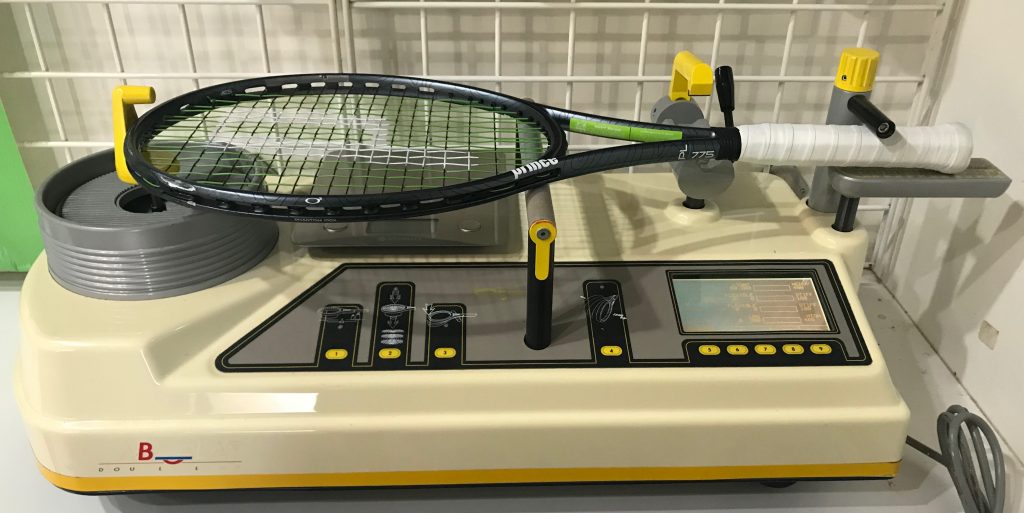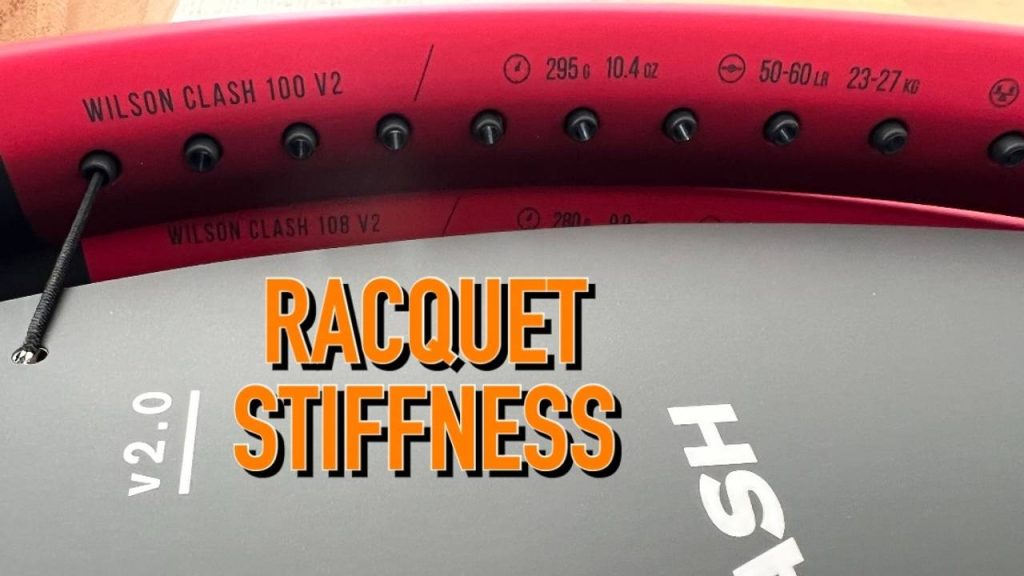The racquet stiffness is measured in RA units. It’s a tricky figure as a racquet flexes in different positions and the RA is an average.
If you look at racquet stiffness and RA numbers, you can say that 55-62 are seen as “flexible racquets,” 62-66 is in the middle, and 67-74 are stiff. The stiffness is always around 3 pts RA for an unstrung racquet. When you add strings, the RA drops about 3 pts.
You can measure the RA rating using a machine such as a Babolat RDC.

Some players prefer the racquet to flex and bend on impact (longer “dwell time”), some players want it to react like a board. Meaning the ball doesn’t stay long on the strings, but shoots out quickly.
Higher stiffness = More power
Lower stiffness = More control/comfort
Can high stiffness lead to tennis elbow?
High stiffness often contributes to arm issues like tennis elbow, shoulder injury, or wrist problems. The reason is that the vibrations are not absorbed in the racquet head like on a flexible racquet but instead move down to the handle and are sent down to the arm.
These vibrations can be dampened using different materials inside the racquet like foam (very common in racquets these days), silicone or other dampening tech. In some cases, they can reduce the risk of arm injury, but you should always be a little careful about stiff racquets if you have a history of arm issues.
However, the debate about stiff racquets being arm-unfriendly or not is still a bit tricky; some players struggle with flexible racquets as they tend to need more weight to provide the same stability, and the weight makes the player swing a bit late, forcing the swing more and perhaps hit off center. A lot of it is based on the players technique, physique, and ability. When it comes to gear, I think the strings and tension are more important than the stiffness of the racquet.
We made a video about multifilament strings on our YouTube channel, as those are the most arm-friendly on the market.

